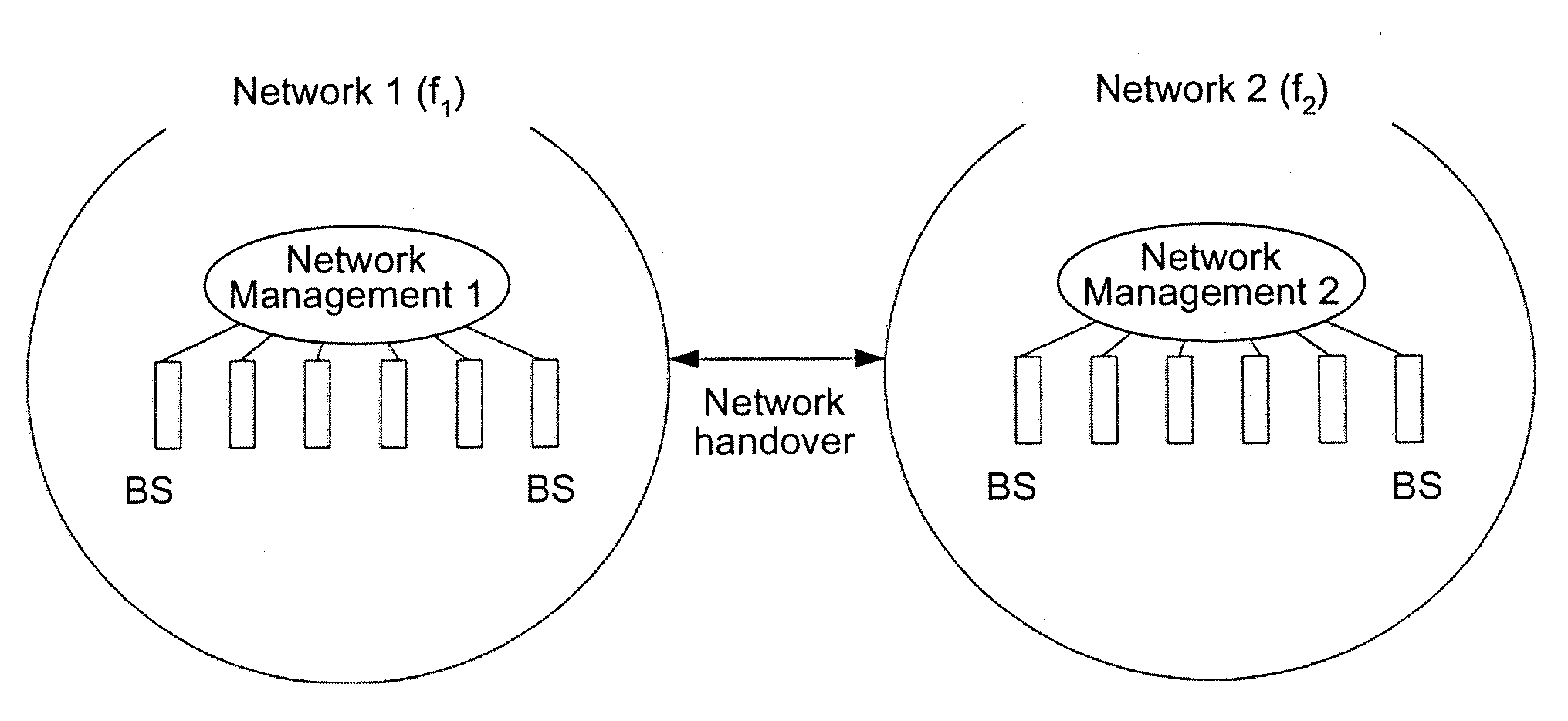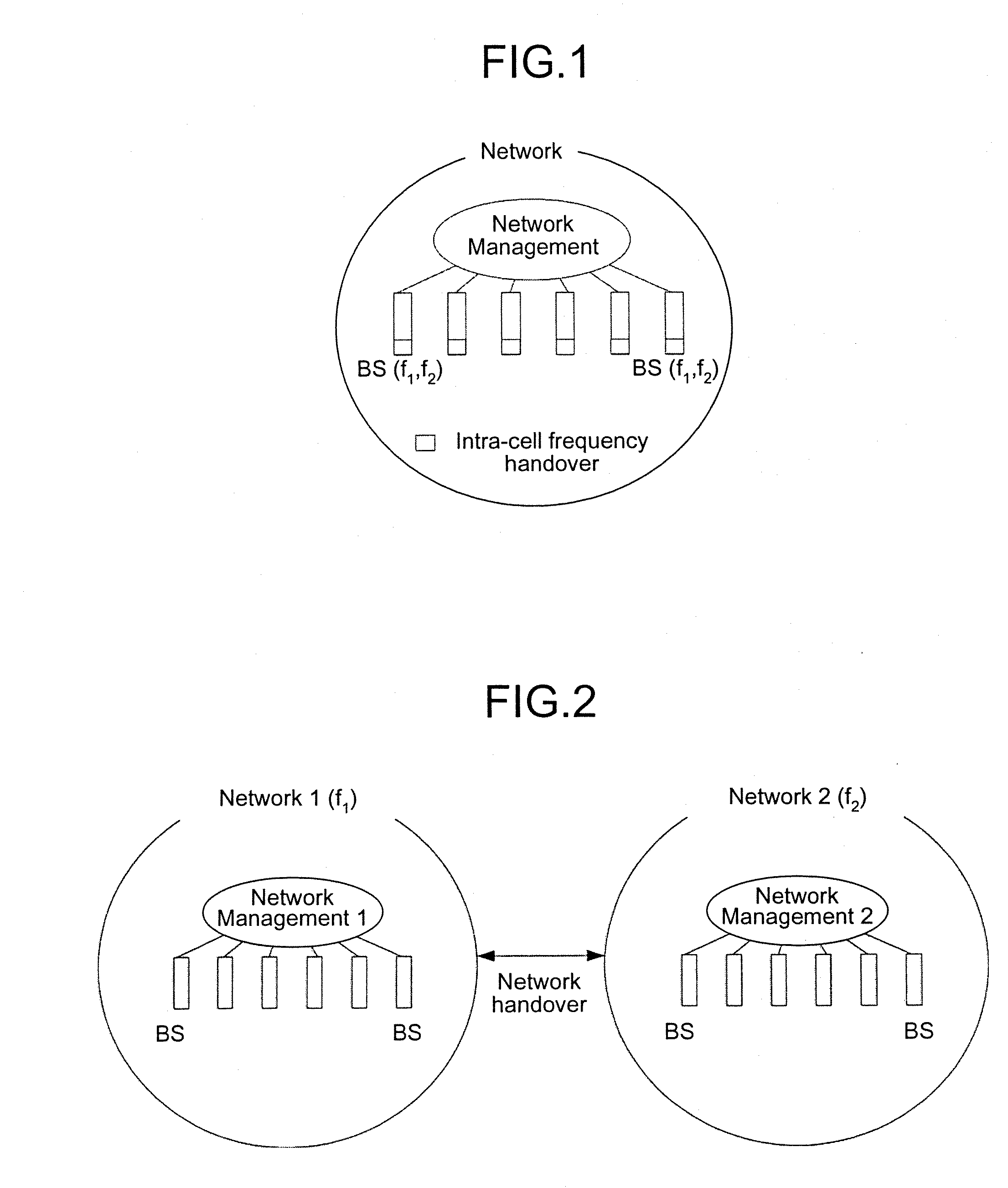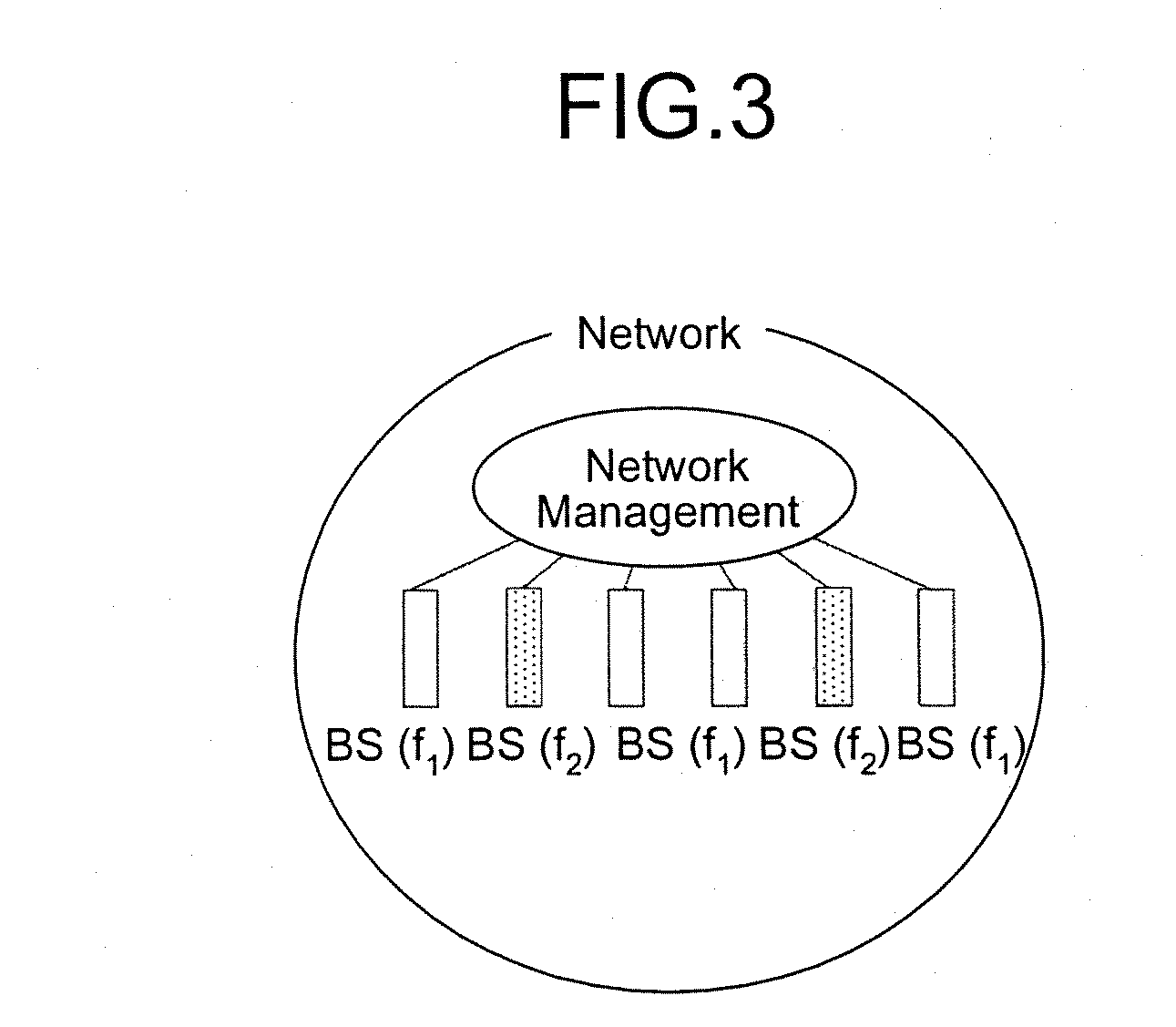Multi-band radio communication method and base station
a radio communication and multi-band technology, applied in the field of multi-band radio communication methods, can solve the problems of high-speed transmission, many connection errors in the system, and severe allocation of low frequency, and achieve the effect of wide service area
- Summary
- Abstract
- Description
- Claims
- Application Information
AI Technical Summary
Benefits of technology
Problems solved by technology
Method used
Image
Examples
first embodiment
[0063]An outline of a multi-band radio communication method according to the present invention is explained first. The present invention explains a new communication system capable of performing high-speed transmission while maintaining high service coverage in a single system, that is, a multi-band radio communication method. The method uses a plurality of wide-separated frequency bands having a difference of propagation and diffraction characteristics, unlike conventional communication using a single frequency band. Usually, a mobile station performs communication using a high frequency, and uses a low frequency only when a propagation state of a high frequency is poor. According to the conventional radio communication, a low frequency is also used on a Line-of-Sight (LOS) path. According to this first embodiment, valuable low-frequency resource is effectively used by limiting the use of a low frequency to an absolutely necessary case. While the multi-band radio communication meth...
second embodiment
[0077]The operation according to a second embodiment is explained next. Constituent elements similar to those of the first embodiment described above are denoted by like reference numerals and explanations thereof are omitted. Only processes different from those of the first embodiment described above are explained below.
[0078]FIG. 7 is an example of a method of allocating bands by the channel controller 9, different from the first embodiment described above. In FIG. 7, Ba denotes a radio resource amount required by a mobile station, A1, A2, A3 indicate the amounts of radio resources of the system corresponding frequency bands, and B1, B2, B3 indicate the amounts of radio resources currently used in respective frequencies. The radio resource amounts are parameters representing capacities of the system, and are given as a communication transmission speed, a band used, and a corresponding number of reference mobile stations.
[0079]According to the present embodiment, a mobile station r...
third embodiment
[0082]The operation according to a third embodiment is explained next. Constituent elements similar to those of the first embodiment described above are denoted by like reference numerals and explanations thereof are omitted. Only processes different from those of the first or second embodiment described above are explained below.
[0083]FIG. 23 and FIG. 24 are examples of a method of allocating bands by the channel controller 9, different from the first embodiment described above. In the system similar to that of the first embodiment, a mobile station usually performs communication using a frequency having a broad cover area. A mobile station can easily move due to usage of a low frequency. On the other hand, when the low-frequency band becomes full and when the band cannot accommodate an additional mobile station any more, the mobile stations are sequentially changed to high-frequency mobile stations. The switching is determined based on a position of a mobile station, a state of th...
PUM
 Login to View More
Login to View More Abstract
Description
Claims
Application Information
 Login to View More
Login to View More - R&D
- Intellectual Property
- Life Sciences
- Materials
- Tech Scout
- Unparalleled Data Quality
- Higher Quality Content
- 60% Fewer Hallucinations
Browse by: Latest US Patents, China's latest patents, Technical Efficacy Thesaurus, Application Domain, Technology Topic, Popular Technical Reports.
© 2025 PatSnap. All rights reserved.Legal|Privacy policy|Modern Slavery Act Transparency Statement|Sitemap|About US| Contact US: help@patsnap.com



